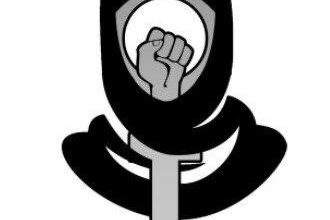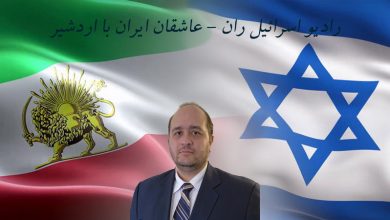
Iran-Israel Relations through history
Published in ICBPS
Relations between the Iranian and Jewish nations date back to more than 2,500 years, before the founding of Israel as a country, when Cyrus the Great conquered the Babylonian Empire (modern Mesopotamia) and freed the captive Jews in Babylon to return to their homeland, “Israel”. In the Jewish Torah, Cyrus is referred to as the “God’s Savior”, which had a very positive effect on modern relations between Iran and Israel, especially in the first 30 years. The reason for the complexity and specificity of the relations between the two countries is that Iran is considered a Muslim country; But on the other hand, Iran is not only an Arab country, but throughout history, it has always been threatened by the Arabs for its territorial integrity, which seeks to separate parts of Iran, including the islands of Greater and Lesser Tunb, and Abu Musa, the southern part of Iran, including Khuzestan province, is supported by the United Kingdom and governs the Persian Gulf.
Although Iran voted against the division of Palestine into two Jewish and Arab states in 1947, two years after the establishment of Israel, the Iranian government recognized Israel as de facto recognition, and even a building in Tel Aviv to establish a representative office was bought. At that time, Iran could not withstand the protests of the Arabs and some Islamic countries, and two years later, the office was closed and the Swiss embassy in Tehran and Tel Aviv became their representatives. The property of the two-year Iranian representative office is still registered in the name of the Iranian government in Tel Aviv. But even though officially the severance of relations between Iran and Israel was ended, practically the relations between the two countries continued and even expanded over time and reached a stage where the Israeli representative office, under the title of “Trade Representation” in Tehran, reopened. In return, the Iranian representative office reopened in Tel Aviv.
Israel’s proximity to Iran led to Khomeini’s famous speech on June 3, 1963, and then the riots on June 5 of the same year. Many researchers consider June 5, 1963, to be the prelude to a revolution that led to the establishment of the Islamic regime in Iran 15 years later. Khomeini said in his speech: “Today I was informed that some people from the pulpit were taken to the Security Organization (SAVAK) and were said that should not talk about three things, whatever else you want to say is allowed, one should not talk about the Shah, one should not talk about Israel, and do not say that religion (Islam) is in danger … Israel does not want the Quran in this country; Israel does not want religious scholars in this country; Israel does not want the rules of Islam in this country. Israel smashes the school (Faizieh Qom) at the invitation of its devilish agents … it wants to take over your economy; wants to destroy your agriculture and trade; wants this country to have no wealth, to seize the wealth through its agents.” Thus, when the Islamic Republic was formed, the seeds of resentment had already been sown between the two governments of Iran and Israel.
A few months before the 1979 Islamic-Communist Revolution, Sharif Emami, the then prime minister, did not take Khomeini’s threats seriously to prevent a catastrophe. This was an opportunity for Khomeini’s supporters to launch a tragedy in Tehran, such as the burning of the Rex Cinema in Abadan where 400 innocent people burned to death. This tragedy, like Cinema Rex, had to be blamed on the Shah and the imperial regime in order for Khomeini and his allies to turn the people against the government. Khomeini’s supporters needed a high death toll to carry out such a conspiracy. The plot to kill people had previously been hatched by Yasser Arafat and the Confederation of Students Abroad, led by individuals including the current Foreign Minister of the Islamic Republic, Javad Zarif. They turned mosques into armories and trafficked Palestinian snipers to Tehran. The Islamists went to the houses around Jaleh Square and persuaded the residents that on September 8, some people would come to their homes to protect the demonstrators from the Shah. Sheikh Yahya Allameh Nasiri, one of the organizing demonstrators in Jaleh Square, arrived in Tehran with suitcases full of cash to employ fake demonstrators and walk-ons for September 8, 1978. On September 7, Sheikh Allameh Nouri along with the Jebhe Melli and the Confederation staged a demonstration in Tehran. During the demonstration, groups marched in and around Jaleh and Shahbaz streets. No shots were fired during the demonstration, and soldiers had only blank bullets in their weapons. The organizers of the demonstration realized that no one would be killed in this situation and that they should find a solution to kill the people and, like the Cinema Rex tragedy, leave a large number of dead in Jaleh Square and blame the Shah and the government. Jaleh Square was ideal for this. Jaleh Square is a small square surrounded by buildings where insurgents could place Palestinian snipers. Following the demonstrations, Jafar Sharif Emami held a meeting with government officials, military and law enforcement agencies to end the chaotic situation in the country, and said he had been given reports that on September 8, Islamists, communists, and armed Marxists-Islamists will march from Jaleh Square towards Parliament and are trying to occupy there. After much deliberation, the council decided to establish martial law in 12 cities for six months. That night the Cabinet informed the public about the approval of the establishment of martial law from 6:00 AM on September 8 in Tehran, Qom, Tabriz, Mashhad, Isfahan, Shiraz, Abadan, Ahvaz, Karaj, Qazvin, Kazerun, and Jahrom.
After the Islamic-Communist Revolution in Iran, the first foreign political figure to appear in Iran was Yasser Arafat. At the same time, Khamenei presented the building of the Israeli “Trade Representation” to Yasser Arafat and became the office of the Palestinian Representation in Iran. Khomeini also called the last Friday of Ramadan of every year as Quds Day and officially unveiled the project to eliminate Israel. The Islamic Republic regime soon entered the war with its neighbor Iraq, one of the roots of which was Khomeini’s invitation to the Iraqi military to accept his leadership and overthrow the ruling regime in Iraq, assuming that Saddam Hussein ordered Khomeini’s deportation from Iraq to France. With the outbreak of the Iran-Iraq War, Israel took the lead in helping Iran, and despite strong anti-Israel slogans, the new government of the Islamic Republic of Iran and Israel maintained informal and secret relations. Although the Islamic Republic has always denied the existence of such relations, according to the Israelis themselves, Israel’s purpose in these relations was not to support the Islamic Republic, but to help Iran confront Saddam’s regime (a common enemy of Iran and Israel) to balance the war. In other words, Israel claimed that increasing the Islamic Republic’s power was dangerous, but creating an Arab coalition was more dangerous. According to the Menachem Begin government, Iraq was Israel’s most powerful enemy after Egypt. Israel, on one hand, did not oppose the fall of Saddam. On the other hand, Iran claims that Iraq’s cooperation with Israel in the protection of oil pipelines had given the country a new role in the region and that Israel had a secret embassy in Iraq and trained Iraqi intelligence personnel through Mossad.
Israeli arms dealer, Yaqub Nimroudi, signed a contract to sell missiles with the Islamic Republic Ministry of Defense in which worthed $135 million, including the Lance and Hawk missiles[1]&[2][2]. In March 1982, the New York Times reported in an article that Israel had sold weapons worthing more than $100 million to Iran during 18 months. The Milan-based Panorama newspaper published documents in which Israel sold 45,000 Uzi machine guns, anti-tank missiles, howitzers, and aircraft parts to the Islamic Republic. According to this article, most of the weapons confiscated from the Palestine Liberation Organization during the 1982 Lebanon war by Israel were sold to Tehran. According to John Bullock[3], in 1983 Israel sold weapons worthing more than $100 million to Iran. The volume of arms shipments by Israel to Iran was so large that a special office was set up in Cyprus. One of the most important traders in this trade was the Saudi businessman Adnan Khashoggi. The Iranian mediator in this trade was Manouchehr Ghorbanifar. An article in the Cyprus Weekly in 1981 indicated that Larnaca Airport had been used to send weapons to Iran. On March 18, 1982, another article was published in the New York Times in which Israeli officials confirmed that they were selling weapons to Iran[4]. During a visit to the United States in 1982, Israeli Prime Minister Ariel Sharon confirmed arms deals to Iran[5]. At a news conference in Paris in 1983, Sharon said that Israel was selling weapons to Iran with US approval. Israel’s ambassador to the United States, Moshe Arnes, said in 1982 that Israeli arms sales to the Islamic Republic were approved by top US government officials.
However, regardless of the brief history mentioned above, the root of the enmity between the Islamic Republic and Israel can have various factors. From the point of view of the regime being Islamic, one of the teachings of the Qur’an is that Muslims can engage in armed struggle if they are expelled from their homes (Quran 22: 39[6]-40[7]). One of the blind spots in the Palestinian crisis, on which Iran also relies heavily, is the issue of Palestinian refugees who are denied the right to return. According to the United Nations, Palestinian refugees are those who lost their homes between June 1, 1946, and May 15, 1948. The United Nations estimates that some 5 million Palestinians are now in this situation[8]. The second factor is the religious one that has led the Islamic Republic of Iran, as well as the Palestinian religious movements, to a persistent hostility to Israel, is the occupation of Jerusalem and its proclamation as the capital by Israel. Jerusalem, or Bait al-Moqadas, is a land to which each of the religions of Islam, Christianity, and Judaism hold a special sanctity. This place is of special importance to Muslims due to the existence of the Al-Aqsa Mosque, which was the first qibla of Muslims before Mecca.
In Khomeini’s and his followers’ opinion, one of the goals of the Islamic Revolution, which has been repeatedly addressed, has been to revive the “greatness and pride of Islam”. The defeat of the Arab states in the 1967 Six-Day War which is relevantly interpreted as the defeat of the Islamic, along with the continuation of Israel’s high-level policies towards the Palestinians, hurt the feelings of religious conservatives, including leaders and followers, in the Islamic world, which continues yet. Obviously, Iran is no exception to this rule, with the difference that since it is the only country governed by a religious and Islamic institution, its reactions to Israel’s approaches are public and strong.
From the very first day of its ruling, the existence and survival of the Islamic Republic have depended on the existence of a hypothetical and non-Islamic enemy, especially Israel. The emphasis is on enmity with Israel in order to mobilize the religious masses and strengthen the base of government among religiously conservative groups that play a major role in stabilizing the government. In other words, with this stance, the Islamic Republic intends to reclaim its old dream of leading the Islamic world.
For the reasons mentioned earlier, the Iranian government’s hostility to Israel has deep ideological, historical, and psychosocial roots. Iran also welcomes enmity with the United States and benefits politically. But this contradicts the fact that all Iranian presidents have sought to resolve differences with the United States. For example, during Khatami’s time, a letter with no header was sent through the Swiss ambassador, Tim Goldman, to the US State Department. The letter was a proposal for a comprehensive agreement between Iran and the United States, which was rejected by George W. Bush. According to the New York Times, the final correction of the letter was made by Mohammad Javad Zarif[9].
However, the Islamic Republic’s enmity with Israel is only ostensibly due to ideological issues and has become more of a conflict between the United States and Iran, as the two countries have waged a proxy war against each other in Syria. But the question is, if the Islamic Republic was concerned about Muslims, why not react to the killing of Uighurs in China or Chechnya? The answer, of course, is the need for Chinese and Russian support to veto UN Security Council resolutions. On the other hand, by adopting this procedure, the Islamic Republic is trying to unite the Islamic countries with itself in order to have the countries of the region in its support in the event of a war between Iran and the United States or Israel. Recently, on December 31, 2020, the Islamic Republic parliament passed a law which has entitled “Iran’s reciprocal action against the assassination of Martyr Soleimani” which, according to its fifth article: “The governments are obliged to make the following arrangements to destroy the usurping Zionist regime by 2041”. The “arrangements” include “sending material aid to the residents of the Gaza Strip and supporting overseas rallies in support of Quds”.
Finally, it is worth mentioning that as long as the power of the mass media is in the hands of the globalists and the leftists, considering the good and close relationship of the leftists with the Islamists, what the late Shah of Iran called “The ominous coalition of red and black”, we seldom see a reaction in the media to the terrorist operations of Hamas and Hezbollah in the media, while Israel’s reciprocal defense in its own defense is exaggerated. In this way, the literature used by them also changes, and the Palestinian casualties are interpreted as slaughtered and martyred, while the Israelis are considered as only “killed”.
[1] Scott, Peter Dale, The Iran-Contra Connection: Secret Teams and Covert Operations in Reagan Era, 1987, South End Press, p. 169-174
[2] Jane Hunter, November 1986, Washington Report on Middle East Affairs, Israeli Arms Sales to Iran
[3] Bulloch, John, The Gulf War: Its Origins, History, and Consequences by John Bulloch and Harvey Morris, London: Methuen London, 1989, p.190
[4] Israel’s Quest for Recognition and Acceptance in Asia: Garrison State Diplomacy, Jacob Abadi, Routledge, 2004, p.49
[5] The Israeli Connection: Whom Israel Arms and why, Benjamin Beit-Hallahmi I.B.Tauris, 1987, p. 13.
[6] Permission (to fight) is given to those upon whom war is made because they are oppressed, and most surely Allah is well able to assist them;
[7] Those who have been expelled from their homes without a just cause except that they say: Our Lord is Allah. And had there not been Allah’s repelling some people by others, certainly, there would have been pulled down cloisters and churches and synagogues and mosques in which Allah’s name is much remembered; and surely Allah will help him who helps His cause; most surely Allah is Strong, Mighty.
[8] https://www.unrwa.org/palestine-refugees
[9] https://kristof.blogs.nytimes.com/2007/04/28/irans-proposal-for-a-grand-bargain/?_r=2





